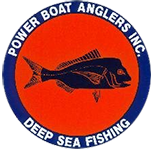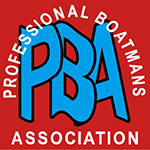Wreck Fishing
 Throughout the Dorset coastline there are many wrecks due to accidents, weather and those caused by wars, ranging from small aeroplanes to large warships. These wrecks can be found all the way across the English Channel. Dependent upon which wrecks are fishing well, the average distance travelled is about 30 miles taking around 2 1/2 hrs to get there.
Throughout the Dorset coastline there are many wrecks due to accidents, weather and those caused by wars, ranging from small aeroplanes to large warships. These wrecks can be found all the way across the English Channel. Dependent upon which wrecks are fishing well, the average distance travelled is about 30 miles taking around 2 1/2 hrs to get there.
Drifting
This type of wreck fishing can be very rewarding or extremely frustrating and very tiring even for the most experienced angler. Fishing on the drift means constant retrieve and dropping down during the length of each drift which will vary on tidal and wind speeds (the area we are fishing may only be very small compared to the length of the drift). Retrieval speeds and number of handle turns need to be constantly monitored until you find the height and speed at which the fish are feeding. One good tip is if you are not catching whilst others are, copy their retrieve and speed ratios and you will soon be in amongst the fish, changing lures as drift speeds change will also give you an edge. Again look around at the other anglers to see what they are catching on.
During the drift it is very important for the angler to inform the skipper if he has a ‘take’ as this will allow the skipper to mark on his plotter where the fish are. It is not uncommon for fish to be ahead, alongside, above or behind the wreck. Acting as a team on board by sharing information will certainly improve your chances of a successful wreck fishing trip and create a better atmosphere. During the drift the skipper will inform you of any changes in depth and when you are coming up to the wreck/ on the wreck/ going down the back of the wreck BUT be aware he does not know where your tackle is. This is where you play your part by judging how high your tackle is to clear the wreck but remain in the zone to give you the best chance of a ‘take’! Unfortunately this is where the tackle losses can be high, but as you gain experience and a feel for wreck fishing things improve and the catch outweighs the losses. This happen to all anglers so a well-stocked tackle box is a must.
Rods & Reels for Wreck Fishing
 In the early ‘dark’ days of wreck fishing, rods used to be more like ‘broomsticks’ with large 6/0 class reels but with today’s choice and superior quality of tackle this can be scaled down to 20-30lb class rods and a multiplier (with a good retrieve rate) filled with quality 30lb braid (I state quality braid because there are some cheap copies which go flat in the tide and create excess drag). Experienced anglers will scale their rods down to using 6lb class rods giving them great sport but I would not recommend this until you are very comfortable with your equipment as large fish are often encountered and may break the rod if not used correctly.
In the early ‘dark’ days of wreck fishing, rods used to be more like ‘broomsticks’ with large 6/0 class reels but with today’s choice and superior quality of tackle this can be scaled down to 20-30lb class rods and a multiplier (with a good retrieve rate) filled with quality 30lb braid (I state quality braid because there are some cheap copies which go flat in the tide and create excess drag). Experienced anglers will scale their rods down to using 6lb class rods giving them great sport but I would not recommend this until you are very comfortable with your equipment as large fish are often encountered and may break the rod if not used correctly.
Terminal tackle for Wreck Fishing
There are 2 main options – the flowing trace with a 10” boom or the classic ‘Portland ‘rig.
Flowing trace method
Attached to your leader is a 10”(approx) boom with 5 or 6 ft trace of 30lb breaking strain line, I prefer a fluorocarbon line as this is softer and presents the lures better. If the fishing is slow lengthening the trace has historical improved the catch rate along with a change in retrieve speed
Portland Rig
A sliding trace with a ‘rotten bottom’ mine usually are approx. 250mm in length with a short length of weaker line attached to the weight clip so if you snag the bottom you chance only losing your weight.
Weights for Wreck Fishing
A selection of weights ranging from 8ozs to 1lb are needed to cope with the change in tide and wind speeds to ensure you remain in contact with the bottom, weights should be of the ‘bomb’ design as they are streamlined and cut through the water better.
Lures for Wreck Fishing
 There are many types available Awol / HTO/ Savage/ Sidewinder to name a few, but most anglers always start with their favourite (mine is a 6”yellow/red Awol or Sidewinder) and progress from there. Fishing lures tend to be about confidence in the one you are using. As the tide decreases changing to a jellyworm or Mister Twister worm allows more movement and attracts attention. When changing lures check to see how the lure flows in the water and try to repeat that when you work the lure. Around the boat not every angler will be using the same so if one lure is working do not be stuck in your ways, change quickly and get in amongst the fish.
There are many types available Awol / HTO/ Savage/ Sidewinder to name a few, but most anglers always start with their favourite (mine is a 6”yellow/red Awol or Sidewinder) and progress from there. Fishing lures tend to be about confidence in the one you are using. As the tide decreases changing to a jellyworm or Mister Twister worm allows more movement and attracts attention. When changing lures check to see how the lure flows in the water and try to repeat that when you work the lure. Around the boat not every angler will be using the same so if one lure is working do not be stuck in your ways, change quickly and get in amongst the fish.
1 = Twin tail for hopping
2/3 Jellyworms
4/9 Lures used on long traces for Cod and Pollack
Techniques for Wreck Fishing
Pollack – can be found at varying heights and often follow the lures before taking them. Count the turns on your reel and once you have found at what height the ‘takes’ occur you can then target that area quicker. Working as a team with the other anglers, sharing info on tactics and at what height ‘takes’ occur certainly improves the catch rate and creates a great atmosphere on the boat.
Cod – are usually hooked closer to the bottom and a shorter trace of heavier line (40lb) approx 600mm on a ‘Portland’ rig allows you to lift the rod without winding pulling the lure away from the seabed. This is called ‘hopping’ and was fine-tuned using lead head lures with twin tails by the legendary skipper Roger Bayzand. To be effective you should not let too much line out keeping as close to the boat as possible so you get maximum lift on your lure.
Both the above techniques will catch Cod and Pollack so it is best if anglers mix and match their techniques until we know what the wreck is holding fish wise, as it would be a waste if everyone went after Cod near the bottom when only 30 to 40 ft above was a large shoal of Pollack we were all missing out on. The skill required with this style of fishing is keeping in touch with the bottom; during the drift the depth will vary so keep adjusting to suit the depth.

During slack water and weaker tides allows you to put the anchor down and have a chance at a big conger which can be up to 100lbs although I have yet to beat that magical barrier (best is 95lb) these will test you and your tackle to the limit so ‘beef up’ your tackle to suit! Whilst anchored you will pick up other species such as Pollack, Cod, Bull Huss, Tope, Sharks and as you drift away from the wreck as the tide turns, often a nice sized Turbot comes up as a bonus.
Rods / Tackle need to have enough back bone to be able to bully the fish away from the protection of the wreck. Anglers will all have their own preference to rods and reels but a good 30/50lb class rod and suitable reel for congering and a lighter rod should you target another species but remember a hungry Conger or Ling will snatch any bait.
In the autumn big Sea Bream can be caught up to 6lb on or around the wrecks and these boys will devour a fillet of mackerel just as easy as the little bait robbing ones inshore. These are angler’s favourites and if you are lucky you can also catch Red Bream which although rare do show up this time of year.

To find out more about our technical rigs and wreck fishing methods please call or contact us using our enquiry form.


